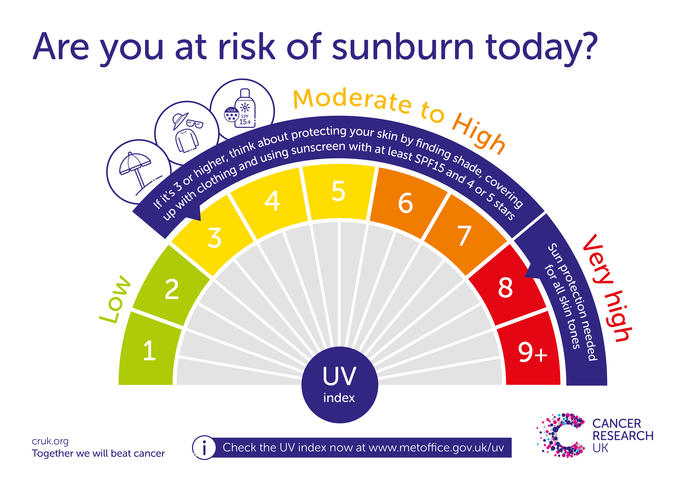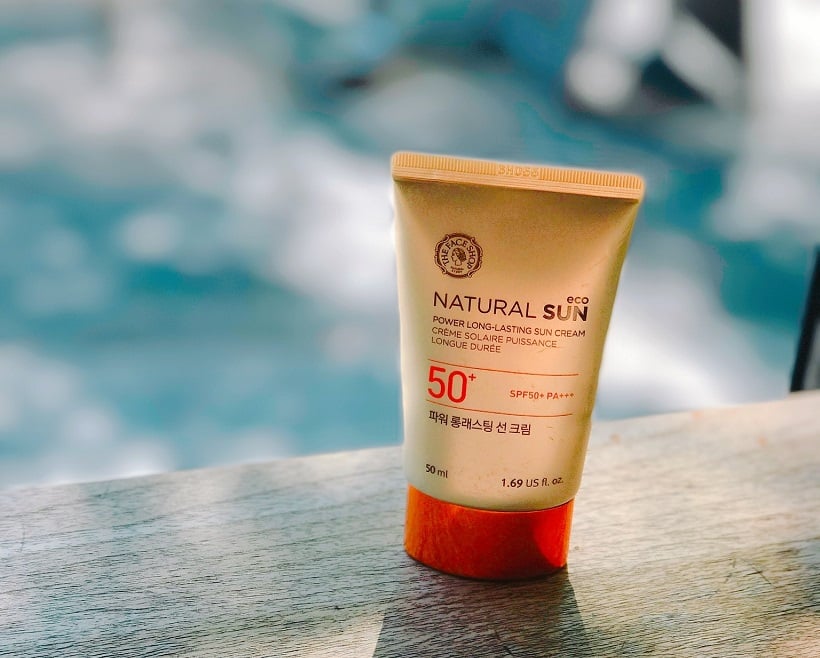
Summer Sun, Creating Cancer Caring Communities | Blog 26th May 2023

Published on 30 May 2023 10:00 AM
It's that lovely time of year again when we are heading to the coast to cool off in the sea or soak up the rays in our gardens and local parks. Whether it’s a weekend trip away, a family BBQ or a picnic on the green, warmth and sunshine make us feel good - but it should only be in small doses.
We hope this blog keeps you a little more protected and safe during these gorgeous months.
Over Exposure
The sun (and artificial sunbeds) release a source of energy called UV rays. Too much exposure to this can actually damage the DNA in our skin cells and potentially lead to skin cancer - the most common form of cancer in the UK.
There is a common misbelief that sun protection is seldom needed here. Yet more than one in three (35%) people burn here every year. A whopping 100,000 new cases are diagnosed in the UK each year, with rates continuing to rise.
Here are some common myths about sun exposure:
- You can only burn in the summer, and never on a cloudy, overcast day... False!
- Tanning is safe, as long as you don’t burn… False!
- Wearing suncream causes vitamin D deficiency… False!
- Sunbeds are a safer alternative to the sun…. False!
- Getting sunburnt every now and then can’t be that bad for you… False!
- You don’t need to use suncream if you have dark skin… False!
- Wearing a higher SPF e.g. SPF50 rather than SPF30, means you can stay out in the sun for longer... False!

Photo by Kori Nori on Unsplash
Top Tips for staying safe
Now, here are some top tips to shield yourself from the sun’s harmful UV rays:
- Clothing is your no.1 barrier. Less skin on show = less sun damage! Cover up as much as you can with long sleeves and a sunhat. Wide-brimmed hats are best; they protect your ears, neck and face better than a cap. Watch the shoulders too, as they burn easily, so wear a T-shirt rather than a vest-top.
- Consider covering up in the water too, with a T-shirt or hat – particularly for children or anyone who burns easily. Severe sunburn, particularly in childhood, increases the risk of developing skin cancer later in life. So it's super important to protect all the family.
- Don’t forget, the sun’s UV radiation can damage your eyes too. So rock those shades when you’re out and about! Go for wrap-around styles, as they don’t let the sun in at the sides. Remember to protect those luscious lips too, using a SPF30+ lip balm.
- Whack on the sun cream! Apply generously with SPF30+ to all areas of skin exposed. This shouldn’t be your only sun defence because it doesn’t offer 100% protection. A waterproof one is best - even if you’re not heading in the pool or sea, it protects you better when you’re hot and sweating! You should apply 20+ minutes before heading outside, and then every two hours (at least). You’ll need to apply more regularly if you’re swimming or sweating a lot though. Remember to check the expiry date as old suncream won’t work so well and you may still get sunburnt! Also, drying off with a towel or lying back on your sunbed can rub suncream off, so you may need to re-apply.
- Keep cool in the shade in the middle of the day, between the hours of 11 am and 3 pm, when the sun’s rays are most powerful. If you are fair-skinned, you can burn in as little as ten minutes! Make sure you keep babies and toddlers in the shade whenever possible.
So, we know that exposure to the sun and using sunbeds increases your risk of getting skin cancer. But did you also know, it can:
- Cause permanent damage to your eyes.
- Speed up ageing.
- Cause headaches, blisters and sunstroke.
- Weaken your immune system.
- Leading to dehydration and heat exhaustion.
The UV index
The UV index indicates how strong the sun’s UV rays are.
When the UV Index is 3 or more, the sun will be strong enough to cause damage, please do take care and protect your skin, especially if you burn easily.
Good News
The good news is that most skin cancers are preventable and can be cured if found early. It is important to check and examine your skin every month for any changes in moles, freckles or any new marks that appear. Common symptoms of skin cancer are a sore or area of skin that doesn't heal within 4 weeks; looks unusual; it hurts, is itchy, bleeds, crusts, or scabs for more than 4 weeks.
You can also d choose to download the Miiskin tracking app to help monitor any changes, new bumps, moles or lesions on your skin.
To look at areas you can’t really see, ask a friend, family member or partner to help look for you. Or try using a hand-held mirror and reflect your skin onto another mirror. You could also take photos of anything that doesn't look normal for you.
It's also a great idea to put a ruler or tape measure next to the abnormal area for the photo, to give you a more precise view of its size and see if it's changing. You can use these pictures to show to your GP.
If you notice any change in your skin that isn’t normal for you, don’t ignore it. Go and see your GP, who will take a closer look and decide whether you need further assessment by a specialist.
That's it for this week, see you on the 9th of June...
Further Help
If you or someone you love has been affected by cancer and would like support, please contact the Gateway at 01872 266383 or email
